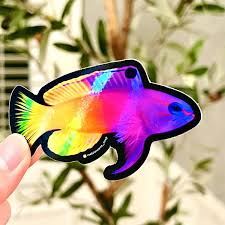The dragon (龙, lóng) has long been a central figure in Chinese culture, representing power, wisdom, prosperity, and divine connection. In the context of ancestral worship, which is one of the most sacred traditions in Chinese society, the dragon plays a crucial role in rituals, symbolism, and spiritual beliefs. From ancient royal ceremonies to family altars, the presence of the dragon in ancestral worship embodies the link between heaven, earth, and human lineage.
This article explores the historical origins, symbolic meanings, artistic representations, and ceremonial uses of dragons in Chinese ancestral worship, shedding light on how this powerful mythical creature has been revered across generations.
1. The Origins of Dragons in Chinese Ancestral Worship
1.1 Early Spiritual Beliefs and the Dragon as a Divine Mediator
- The concept of the dragon as a bridge between heaven and earth dates back to the Neolithic period. Early Chinese tribes believed dragons could communicate with spirits and bring messages from deceased ancestors.
- Shang Dynasty (1600–1046 BCE) oracle bone inscriptions suggest that dragons were invoked during ancestral sacrifices to ensure prosperity and divine protection.
1.2 The Zhou Dynasty (1046–256 BCE): Codifying Ancestral Worship
- The Zhou Dynasty introduced formalized rituals for honoring ancestors, incorporating dragon imagery into ancestral temples, bronze vessels, and ceremonial garments.
- The dragon was seen as a guardian spirit, ensuring that ancestors’ blessings would protect their descendants.
2. Dragon Symbolism in Ancestral Worship
2.1 The Dragon as a Symbol of Lineage and Power
- In imperial China, emperors often traced their ancestry to dragons, reinforcing their divine right to rule.
- Family clans adopted dragon motifs in ancestral halls and genealogy records, signifying their noble heritage.
2.2 The Role of Dragons in Feng Shui and Ancestral Burial Sites
- Feng Shui (风水, fēng shuǐ) emphasizes the presence of the dragon in determining the placement of ancestral graves.
- The “Dragon Vein” (龙脉, lóng mài) in Feng Shui refers to energy pathways in the landscape, which influence the spiritual well-being of descendants.
- Ancestral tombs are often built near mountains shaped like dragons to attract auspicious energy.
3. Dragons in Ancestral Worship Rituals
3.1 The Use of Dragon-Inspired Altars and Temples
- Many ancestral altars feature dragon carvings on incense burners, ancestral tablets, and ceremonial plaques.
- Temples dedicated to family ancestors often have dragon pillars, symbolizing their protection over the lineage.
3.2 Dragon Dances in Ancestral Worship Festivals
- The Dragon Dance (舞龙, wǔ lóng) is performed during important ancestral celebrations such as Qingming Festival (清明节, Qīngmíng Jié) and Hungry Ghost Festival (中元节, Zhōngyuán Jié).
- The dance serves to ward off evil spirits and invite ancestral blessings.
4. Dragon Motifs in Ancestral Worship Artifacts
4.1 Dragon-Inspired Ancestral Tablets and Memorials
- Ancestral tablets (祖先牌位, zǔxiān páiwèi) often feature dragons to indicate a connection to celestial realms.
- Some elite families commissioned jade tablets with dragon engravings to emphasize their high status.
4.2 Ritual Vessels with Dragon Designs
- Bronze ritual vessels (青铜器, qīngtóng qì) from the Shang and Zhou Dynasties often depict dragons and were used in ancestral sacrifices.
- Ming and Qing Dynasty porcelain vessels continued this tradition, featuring intricate blue-and-white dragon motifs.
5. The Imperial Ancestral Worship and the Dragon
5.1 The Temple of Heaven and Dragon Worship
- The Temple of Heaven (天坛, Tiāntán) in Beijing, where emperors performed ancestral and celestial rites, prominently features dragon imagery.
- The Dragon Throne, used by emperors in ancestral worship ceremonies, symbolizes their direct connection to divine ancestors.
5.2 The Role of the Emperor as the “Son of the Dragon”
- Chinese emperors were considered the Son of the Dragon (龙子, lóng zǐ), reinforcing their role as intermediaries between heaven and the spirits of their royal ancestors.
- State rituals included dragon banners and robes, emphasizing the sacred bond between the ruler and his lineage.
6. The Evolution of Dragon Symbolism in Modern Ancestral Worship
6.1 Contemporary Ancestral Worship and the Dragon’s Influence
- While traditional ancestral worship has evolved, many modern Chinese families still use dragon imagery on ancestral tablets and altars.
- Digital ancestral worship platforms incorporate dragon-themed visuals to maintain cultural heritage.
6.2 The Revival of Dragon Motifs in Temples and Festivals
- Many newly restored temples and shrines continue to feature dragons in roof carvings, incense holders, and prayer halls.
- The global Chinese diaspora continues to honor ancestors using dragon-themed decorations and rituals, preserving this ancient tradition.
Conclusion
The dragon’s presence in Chinese ancestral worship remains a powerful symbol of lineage, divine connection, and spiritual protection. From ancient oracle bones to modern family shrines, the dragon continues to embody the strength of family bonds and the blessings of ancestors.
As Chinese culture evolves, the dragon remains an enduring figure in rituals, art, and spiritual beliefs, ensuring that the legacy of ancestral reverence is passed down through generations.

